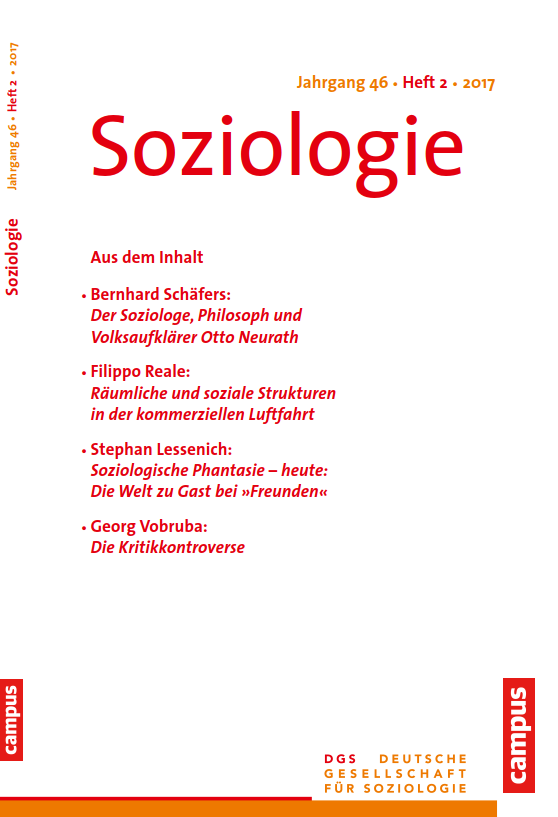Räumliche und soziale Strukturen in der kommerziellen Luftfahrt
Schlagwörter:
LuftfahrtAbstract
Die Luftfahrt repräsentiert unterschiedliche bedeutsame Grundfragen der Soziologie. In ihr als Sektor gipfeln Prozesse wie Globalisierung, Beschleunigung und technologischer Wandel. Im Flughafen und in der räumlichen Enge der Flugzeugkabine wiederum konzentrieren sich Prozesse der Disziplinierung, der Kontrolle und der Selbstbeherrschung. Die Unnatürlichkeit des Fliegens erzeugt eine affektive Ambivalenz bei den Fliegenden, die auf sakrale Praktiken und Rituale trifft, was wiederum eine mythische Erfahrung erzeugen kann. Daneben ist die Flugzeugkabine sozioökonomisch segmentiert, wobei vor allem die Erwerbstätigkeit an Bord eines Flugzeugs nach wie vor vergeschlechtlicht ist. Dies reflektiert das maskulinisierte Berufsethos von Piloten (weniger von Pilotinnen), welches zusammen mit bestimmten ihrer sozioökonomischen Eigenschaften eine bemerkenswerte politische Ökonomie der Arbeitsbeziehungen hervorruft, die sich von der politischen Ökonomie der Arbeitsbeziehungen der eigentlichen Arbeiter- und Arbeiterinnenbewegung unterscheidet. Grundsätzlich ist die Entwicklung der politischen Ökonomie des Luftfahrtsektors exemplarisch für unterschiedliche typische Prozesse des Spätkapitalismus. Zugleich steht die Entwicklung der Luftfahrt in Westeuropa in einem wichtigen und interessanten ambivalenten Verhältnis zu Prozessen der europäischen Integration. Nicht zuletzt der Erfolg des Airbus-Projekts steht dabei emblematisch für diesen Einigungsprozess.
Aviation represents various important sociological questions. Processes like globalization, acceleration, and technological change cumulate in this sector, while, on the other hand, processes of discipline, control, and self-composure concentrate inside airports and in the narrow spaces of aircraft cabins. Flying as something unnatural creates affective ambivalence among the flying, colliding with sacral practices and rituals, which might then produce a mythical experience. An aircraft cabin is moreover socio-economically segmented and especially working aboard an aircraft is still particularly gendered. This reflects (male) pilots’ masculinized professional ethos which combined with some of their socio-economic characteristics leads to a peculiar political economy of labor relations. This political economy differs widely from the political economy of labor relations of the common labor movement. The development in the political economy of aviation generally exemplifies various typical processes of late capitalism. At the same time, the development of aviation in Western Europe and processes of European integration show an ambivalent relationship. The success of the Airbus project is but one emblematic example for this process of integration.


